 |
 |
Our enthusiastic and extremely knowledgeable perennials team is here to answer your questions and help you choose the best perennials for your situation. There’s always something in bloom for sun, shade, butterflies, birds or deer resistance as well as a variety of bulbs for your space.
Stroll through our time-tested favorites and introduce yourself to the newest varieties. We garden with perennials too; we love them and it shows!
|
115 found, showing page 4 of 8
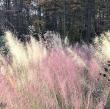
Airy pink blooms. Fine, threadlike foliage. Native. USDA 5-9
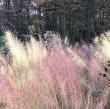
Airy pink blooms. Fine, threadlike foliage. Native. USDA 5-9
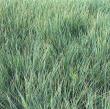
Height: 8 inches
Spread: 10 inches
Sunlight: full sun
Hardiness Zone: 3a
Other Names: Festuca ovina var. glauca
Description:
Heat and Drought tolerant once established, this selection produces beautiful bushy mounds of blue-gray grass-like foliage with tan colored spikes rising above in the summer; excellent performance in containers, borders and garden beds; low maintenance
Ornamental Features:
Boulder Blue Fescue is primarily valued in the garden for its interestingly mounded form. Its attractive grassy leaves remain steel blue in color throughout the year. The tan seed heads are carried on spikes from mid summer to late fall.
Landscape Attributes:
Boulder Blue Fescue is an herbaceous evergreen perennial grass with a mounded form. It brings an extremely fine and delicate texture to the garden composition and should be used to full effect.
This is a relatively low maintenance plant, and is best cleaned up in early spring before it resumes active growth for the season. It has no significant negative characteristics.
Boulder Blue Fescue is recommended for the following landscape applications:
- Rock/Alpine Gardens
- Border Edging
- General Garden Use
- Naturalizing And Woodland Gardens
- Container Planting
Planting & Growing:
Boulder Blue Fescue will grow to be about 8 inches tall at maturity, with a spread of 10 inches. Its foliage tends to remain low and dense right to the ground. It grows at a medium rate, and under ideal conditions can be expected to live for approximately 8 years. As an evegreen perennial, this plant will typically keep its form and foliage year-round.
This plant should only be grown in full sunlight. It prefers to grow in average to dry locations, and dislikes excessive moisture. It is considered to be drought-tolerant, and thus makes an ideal choice for a low-water garden or xeriscape application. It is not particular as to soil type or pH. It is highly tolerant of urban pollution and will even thrive in inner city environments. This is a selected variety of a species not originally from North America. It can be propagated by division; however, as a cultivated variety, be aware that it may be subject to certain restrictions or prohibitions on propagation.
Boulder Blue Fescue is a fine choice for the garden, but it is also a good selection for planting in outdoor pots and containers. It is often used as a 'filler' in the 'spiller-thriller-filler' container combination, providing a canvas of foliage against which the thriller plants stand out. Note that when growing plants in outdoor containers and baskets, they may require more frequent waterings than they would in the yard or garden.
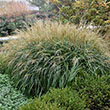
Pinkish blooms. Upright clumping grass. Self-seeding. USDA 5-9
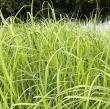
Dark green foliage turns a beautiful dark purple or near black in fall. Tolerates a wide range of soils. Good for erosion control. USDA 4-9

Blue-green foliage with long fronds. Compact, bushy habit. USDA 4-8
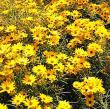
Perennial sunflower. Profuse bloomer with 2.5-3? golden yellow flowers. Tolerates clay. USDA 6-9
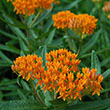
Plant Height: 24 inches
Flower Height: 32 inches
Spread: 24 inches
Sunlight: full sun
Hardiness Zone: 2b
Description:
A wonderful selection that is perfect for attracting butterflies to gardens; bright golden orange clusters of fragrant flowers rise above narrow, green foliage during the summer months and into early fall; easy to grow, drought tolerant once established
Ornamental Features:
Butterfly Weed has fragrant orange flat-top flowers with gold overtones at the ends of the stems from mid to late summer. The flowers are excellent for cutting. Its narrow leaves remain green in color throughout the season.
Landscape Attributes:
Butterfly Weed is an herbaceous perennial with an upright spreading habit of growth. Its medium texture blends into the garden, but can always be balanced by a couple of finer or coarser plants for an effective composition.
This is a relatively low maintenance plant, and is best cleaned up in early spring before it resumes active growth for the season. It is a good choice for attracting butterflies to your yard, but is not particularly attractive to deer who tend to leave it alone in favor of tastier treats. It has no significant negative characteristics.
Butterfly Weed is recommended for the following landscape applications:
- Mass Planting
- General Garden Use
- Naturalizing And Woodland Gardens
Planting & Growing:
Butterfly Weed will grow to be about 24 inches tall at maturity extending to 32 inches tall with the flowers, with a spread of 24 inches. It tends to be leggy, with a typical clearance of 1 foot from the ground, and should be underplanted with lower-growing perennials. It grows at a medium rate, and under ideal conditions can be expected to live for approximately 10 years. As an herbaceous perennial, this plant will usually die back to the crown each winter, and will regrow from the base each spring. Be careful not to disturb the crown in late winter when it may not be readily seen!
This plant should only be grown in full sunlight. It is very adaptable to both dry and moist locations, and should do just fine under typical garden conditions. It is considered to be drought-tolerant, and thus makes an ideal choice for a low-water garden or xeriscape application. It is not particular as to soil type or pH. It is quite intolerant of urban pollution, therefore inner city or urban streetside plantings are best avoided. This species is native to parts of North America.
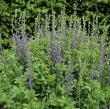
Blue Blooms. Shruby. Tolerates deer, drought, & poor soils. USDA 3-9
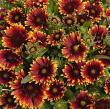
Excellent cut flower. Beaitful long bloomer from summer to fall. USDA 6-10
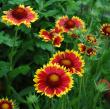
Prolific yellow-tipped red blooms. Compact. USDA 3-9
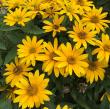
Golden yellow blooms. Compact, upright habit. Heat tolerant. Long bloomer. USDA 4-9
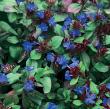
Height: 12 inches
Spread: 18 inches
Sunlight: full sun, partial shade
Hardiness Zone: 4b
Other Names: Leadwort
Description:
Excellent groundcover with clusters of the truest blue flowers in late summer; foliage turns a nice bronzy-red color in fall; flowers resemble that of woodland phlox, and the red calyces add a wonderful color contrast
Ornamental Features:
Plumbago features showy clusters of blue star-shaped flowers with brick red calyces at the ends of the stems from late summer to early fall. Its glossy oval leaves are green in color. As an added bonus, the foliage turns a gorgeous red in the fall.
Landscape Attributes:
Plumbago is an herbaceous perennial with an upright spreading habit of growth. Its medium texture blends into the garden, but can always be balanced by a couple of finer or coarser plants for an effective composition.
This is a relatively low maintenance plant, and is best cleaned up in early spring before it resumes active growth for the season. It is a good choice for attracting bees and butterflies to your yard. It has no significant negative characteristics.
Plumbago is recommended for the following landscape applications:
- Mass Planting
- Rock/Alpine Gardens
- Border Edging
- General Garden Use
- Groundcover
- Naturalizing And Woodland Gardens
- Planting & Growing
Plumbago will grow to be about 10 inches tall at maturity, with a spread of 18 inches. Its foliage tends to remain low and dense right to the ground. It grows at a medium rate, and under ideal conditions can be expected to live for approximately 8 years. As an herbaceous perennial, this plant will usually die back to the crown each winter, and will regrow from the base each spring. Be careful not to disturb the crown in late winter when it may not be readily seen!
This plant does best in full sun to partial shade. It does best in average to evenly moist conditions, but will not tolerate standing water. It is not particular as to soil type or pH. It is somewhat tolerant of urban pollution. Consider covering it with a thick layer of mulch in winter to protect it in exposed locations or colder microclimates. This species is not originally from North America. It can be propagated by division.
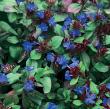
Deep blue flowers. In early fall, leaves change to a vivid mahogany red color. Growing in sun or shade. Wide range of soil types. Long-lived groundcover. USDA 5-9
115 found, showing page 4 of 8



